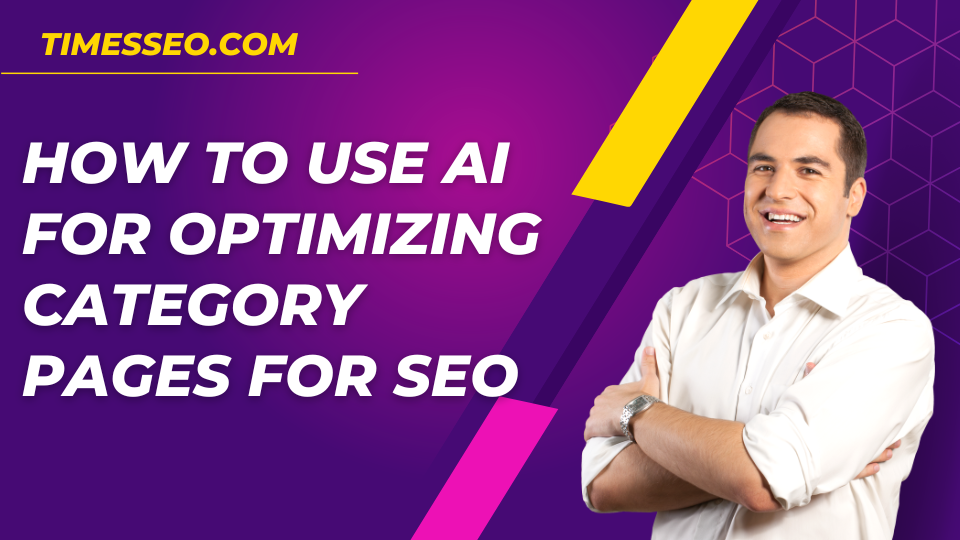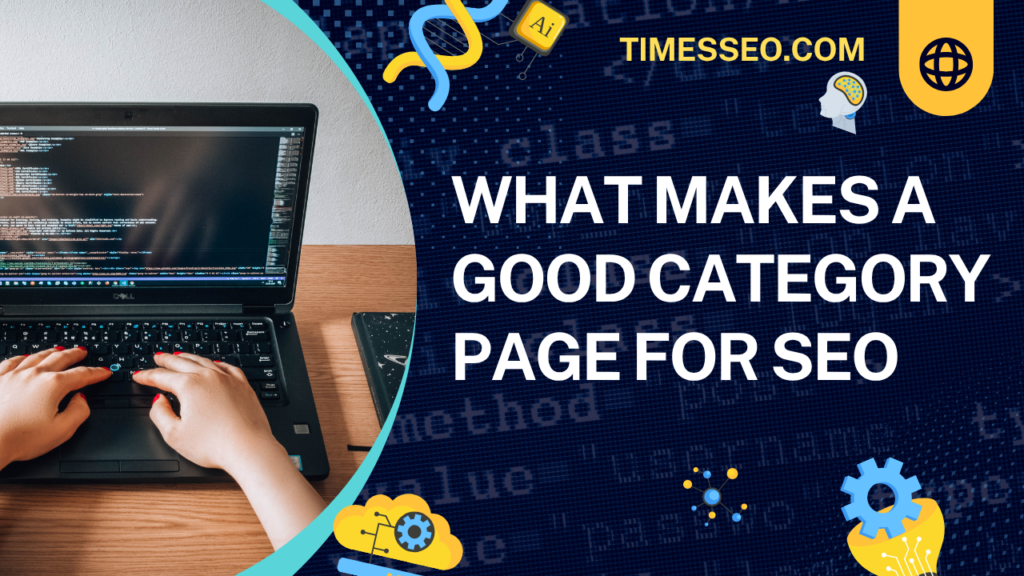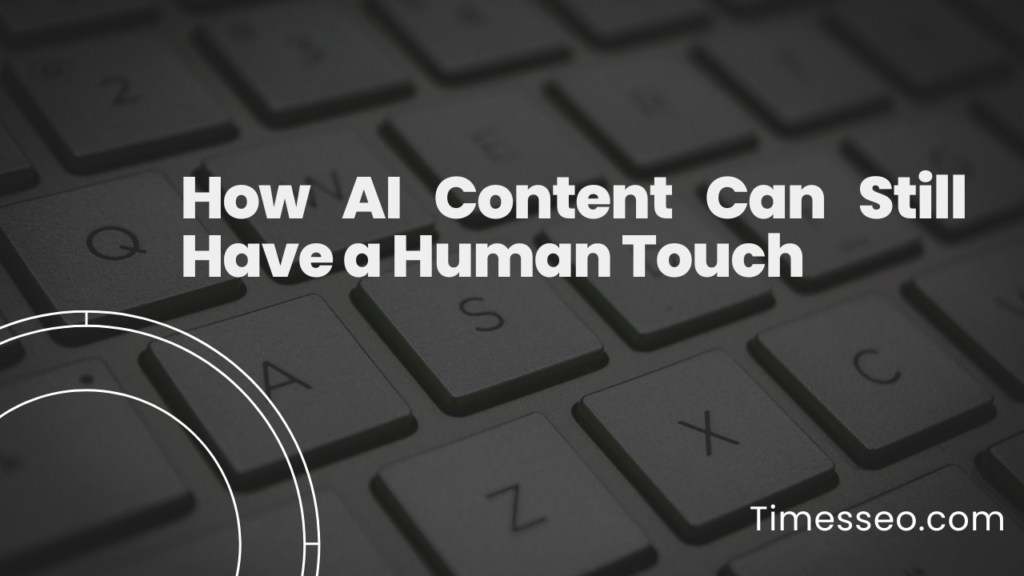
How to Use AI for Optimizing Category Pages for SEO
Learn the smart way to boost your website’s visibility with AI-powered strategies for optimizing category pages for SEO. This blog post explores how artificial intelligence can streamline keyword research, content creation, metadata generation, and internal linking to improve rankings and user experience. Perfect for e-commerce sites and content-heavy platforms looking to scale SEO effectively.
Table of Contents
Introduction
Let’s be honest: category pages are often the unsung heroes of SEO. They sit between your homepage and your product pages, quietly helping users navigate and search engines understand your site’s structure. But if you’ve been treating them like filler content—you’re missing a massive SEO opportunity.
Good news? AI has entered the chat—and it’s here to supercharge how we optimize these crucial pages.
What Makes a Good Category Page for SEO
Understanding About the Good Category Page for SEO
A solid category page is more than just a list of products. It’s a gateway.
Clear and Relevant Headings
You need H1s, H2s, and subheadings that speak directly to user intent. Think of them like street signs—if they’re confusing, users and crawlers both get lost.
Keyword Integration
Yes, you need your main keyword—but also secondary and long-tail variants. Sprinkle them naturally. Don’t stuff them like a Thanksgiving turkey.
User Experience and Structure
Clean design, responsive layout, and intuitive filtering go hand-in-hand with SEO. Google rewards helpful, user-first content.
Internal Linking and Crawlability
Your category page should connect to:
- Related categories
- Bestselling products
- Educational resources
It’s like building a well-lit path for search bots.
The Role of AI in SEO
AI is more than just a buzzword. It’s a set of tools that’s changing how we approach content, data, and user behavior.
What AI Can Do for SEO
- Analyze massive amounts of keyword data
- Generate optimized content
- Spot SEO gaps
- Suggest improvements in real time
Tools Powered by AI
From ChatGPT to Surfer SEO, Frase.io, and MarketMuse, these tools help with everything from keyword research to writing entire paragraphs.
Benefits of Using AI in Page Optimization
- Saves time and cost
- Reduces guesswork
- Provides consistent quality
- Scales across hundreds of pages
Best AI Tools for Category Page Optimization
ChatGPT / Gemini / Claude
Great for content generation, keyword lists, and prompt-based content tasks.
Surfer SEO
combines data with AI for audits, keyword density, and on-page SEO recommendations.
Frase.io
Excellent at creating content briefs, outlines, and real-time optimization recommendations.
MarketMuse
Uses AI to audit and plan content clusters based on topical authority.
Jasper AI
Great for scaling SEO metadata and short-form descriptions across multiple pages.
Steps to Optimize Category Pages Using A
Let’s break it down step by step.
Step 1 – Keyword Research with AI Tools
No more sifting through spreadsheets for hours. AI-powered tools like Semrush Keyword Magic, ChatGPT, and Frase.io can:
- Identify long-tail opportunities
- Suggest semantically related keywords
- Cluster terms by intent
Example Prompt:
“List long-tail keywords for the category ‘Men’s Running Shoes’ with commercial intent.”
Step 2 – Auto-Generating Meta Titles and Descriptions
AI can craft click-worthy meta tags in seconds.
Example:
Before:
“Running Shoes – Category Page”
After (AI-generated):
“Top Men’s Running Shoes for Speed & Comfort | Free Shipping”
Use tools like Jasper or ChatGPT with custom prompts.
Step 3 – Content Generation for Category Descriptions
The first 150–200 words on your category page are prime real estate.
Use AI to create:
- An attention-grabbing hook
- Keyword-rich body
- Call-to-action
Prompt tip:
“Write a 200-word SEO-optimized introduction for a category page on ‘Organic Skincare Products’.”
Step 4 – Image Optimization with AI
AI can auto-generate:
- ALT text
- File names
- Descriptive captions
Tools like ImageKit, TinyPNG AI, or even Cloudinary make this process lightning-fast.
Step 5 – Internal Linking Strategy Using AI Insights
AI is able to propose connection patterns according to authority flow and relevancy.
For example:
- “Users who viewed this category also liked…”
- Related blog articles linked from the description
Tools like Frase or ChatGPT can suggest internal links by scanning your sitemap or content structure.
Step 6 – Monitoring & Updating with AI
Optimization isn’t a one-time task.
AI-driven platforms like Surfer SEO and MarketMuse can:
- Audit content monthly
- Suggest updates
- Track keyword drops or gains
Case Study: Before and After AI Optimization
Before:
A generic category page for “Women’s Activewear” with:
- No description
- No meta data
- Poor internal linking
After AI Optimization:
- 250-word intro with benefits, CTAs, and long-tail keywords
- AI-crafted meta tags
- Internal links to blog posts like “How to Choose the Right Workout Leggings”
Result?
- +35% organic traffic in 60 days
- +18% time on page
- -22% bounce rate
Common Mistakes to Avoid
Over-optimizing with AI-generated content
More isn’t always better. Keep it natural.
Using duplicate AI text across pages
Always modify and customize. Google knows when you’re being lazy.
Ignoring user search intent
Focus on what people want to know—not just what you want to rank for
How AI Content Can Still Have a Human Touch
Editing for tone and clarity
Always review what AI gives you. Tweak for emotion, flow, and brand tone.
Adding brand personality
Use your brand voice—funny, formal, elegant? Don’t sound robotic.
Layering in customer pain points and FAQs
Make it relatable. Anticipate questions and address concerns right on the page.
Tips for Scaling AI SEO Efforts Across Multiple Categories
Build dynamic templates
Structure your category pages with placeholders for AI to fill.
Train AI prompts based on niche
Save prompt templates by category or industry for faster reuse.
Use batch-processing
Run scripts to auto-generate 100+ meta titles or descriptions using AI.
The Future of AI and SEO for Category Pages
AI won’t replace SEO—it’ll supercharge it. Expect:
- Voice-optimized category pages
- AI that adapts content in real-time
- Smarter content personalization
Conclusion
Optimizing your category pages is no longer optional—it’s essential. And thanks to AI, it’s easier, faster, and more effective than ever. From keyword research to content creation, meta tags, and internal links—AI does the heavy lifting so you can focus on strategy and growth.
Ready to turn your category pages into SEO magnets? Start leveraging AI today and watch your traffic (and sales) take off.
Frequently Asked Questions
Not fully. AI handles the heavy lifting, but human input is needed for nuance, tone, and final review.
Yes—if it’s unique, valuable, and user-first. Avoid spammy, duplicated content.
Track performance with tools like Google Search Console and Surfer SEO. Monitor traffic, bounce rates, and keyword rankings.
Absolutely. Writers refine and humanize AI content—especially important for brand voice and conversion.
Every 3–6 months. SEO is dynamic, and fresh content wins.
Table of Contents
Popular Posts
-
 Affordable Technical SEO Audit for Small Business: A Complete Guide26 Jun 2025 Blog
Affordable Technical SEO Audit for Small Business: A Complete Guide26 Jun 2025 Blog -
 How to Get an Affordable Technical SEO Audit for Small Business27 Jun 2025 Blog
How to Get an Affordable Technical SEO Audit for Small Business27 Jun 2025 Blog -
 The Ultimate Local SEO Audit Checklist for Startups28 Jun 2025 Blog
The Ultimate Local SEO Audit Checklist for Startups28 Jun 2025 Blog -
 Local SEO Audit Checklist for Startups: A Beginner’s Guide28 Jun 2025 Blog
Local SEO Audit Checklist for Startups: A Beginner’s Guide28 Jun 2025 Blog -
 Top On-Page SEO Audit Steps for Service Websites Every Business Should Know29 Jun 2025 Blog
Top On-Page SEO Audit Steps for Service Websites Every Business Should Know29 Jun 2025 Blog -
 Technical SEO for WordPress: The Ultimate Beginner’s Guide01 Jul 2025 Blog
Technical SEO for WordPress: The Ultimate Beginner’s Guide01 Jul 2025 Blog -
 The Impact of On-Page SEO Audit Steps for Service Websites on UX01 Jul 2025 Blog
The Impact of On-Page SEO Audit Steps for Service Websites on UX01 Jul 2025 Blog -
 Technical Mobile SEO Audit Tips for Developers02 Jul 2025 Blog
Technical Mobile SEO Audit Tips for Developers02 Jul 2025 Blog -
 Complete SEO Backlink Audit Guide for Better Google Rankings03 Jul 2025 Blog
Complete SEO Backlink Audit Guide for Better Google Rankings03 Jul 2025 Blog -
 Boost Your Rankings with Technical SEO for WordPress01 Jul 2025 Blog
Boost Your Rankings with Technical SEO for WordPress01 Jul 2025 Blog






